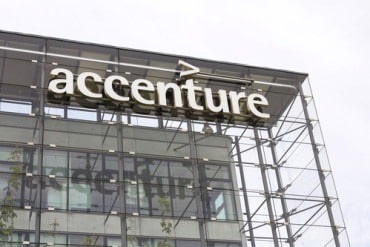
Field service organizations can use AI to improve efficiency and make net-zero promises a reality.
Every organization is under critical eyes following their contributions to rising carbon emissions—yet, in 2021, only 20% of the largest 2,000 publicly listed global organizations pledged to a “net-zero” emissions policy to tackle worldwide climate change. Sustainable processes to optimize fuel mileage and reduce energy waste means companies need to steer away from traditional digital planning tools and adopt new approaches to advanced artificial intelligence (AI) tools to power their ESG operations.
In 2021 alone, over 40 billion metric tons of greenhouse gases were produced globally, with the U.S., the world’s second-largest greenhouse gas producer, emitting almost one-sixth. The U.S. has since projected a net-zero promise by 2050. Reducing energy waste is an integral step to achieving this pledge through a Long-Term Strategy (LTS). Field service can play a vital role, as a high mileage user, in moving this goal of net-zero emissions by 2050 from a concept to reality.
Field service is making its mark in the fight against climate change
The transportation industry is the largest contributor to U.S. emissions, so it has an important role to play in the transition to net zero. In just one year, U.S. vehicles produce 1,098 million metric tons of carbon dioxide equivalents—almost one-fifth of the nation’s total carbon dioxide emissions. Reducing drive time is a crucial way to reduce the nation’s carbon footprint.
While we see more and more service organizations adopting a remote-first approach, which will reduce the number of on-site visits necessary for field technicians to complete, companies agree that there’s no foreseeable future in which field service doesn’t include an on-site component. Where and when service visits remain necessary, optimized resource utilization and route scheduling provide an impactful way for field service organizations to tighten fuel consumption, to reduce energy waste and carbon emissions.
However, this is easier said than done. Matching team resources with fluctuating demand over multiple time horizons is a tough challenge. The task of managing customer expectations with unexpected delays and unforeseen events in real time must often take priority over perfectly optimized resource utilization.
But AI-powered Planning, Scheduling & Optimization (PSO) technology can save field service organizations many hours of time, countless miles, and hundreds of thousands of dollars, ensuring operations are as efficient and sustainable as possible without sacrificing customer experience.
See also: Predictive Maintenance Coming to Connected Vehicles Through AI
AI tools open the door for sustainable field service
Real-time optimization, scalability, and built-in intelligence are key when it comes to workforce planning and scheduling. The AI technology embedded in IFS PSO finds and fixes invisible inefficiencies that businesses cannot see. It automates the optimization of workforce planning, scheduling, and routing for a more streamlined, efficient, and environmentally friendly version of field service operations.
PSO automatically schedules service time slots based on resource availability and prioritizes jobs depending on the level of urgency so that the most pressing and time-sensitive jobs can be scheduled as soon as possible without interfering with pre-existing jobs. This means the right resources are available at the right time for the right job without the risk of double-booking or the need for technicians to make multiple trips.
When there are sudden changes in either demand and urgent request or resource availability, for instance, due to illness, PSO can immediately absorb incoming workload imbalances by automating capacity and the movement of resources, minimizing the number of trips a technician must make, and maximizing operational efficiency in real-time.
See also: Out of the Frying Pan and into the Connected Kitchen
Improved service efficiency with AI and dynamic route optimization
The dynamic route optimization function of PSO technology assigns jobs to technicians that will optimize drive time by taking the most efficient route. It achieves this by using AI to calculate the time needed to complete each task based on existing data for each technician so that an appropriate timeframe is given to jobs that are more complex or have a larger scale to guarantee there is enough time for completion and to prevent overruns. Routing is also optimized based on geographic parameters, such as operating in an urban versus rural catchment area, and assigns jobs that are as close together as resource availability will allow. This ensures the order of jobs is not only time optimized but route optimized so that each field technician travels the minimum amount of distance necessary.
Evidence is facts: you can’t argue with the numbers!
Businesses have reduced average technician travel time by 35%-50% when implementing IFS PSO. One example is CoolSys, a U.S.-based HVAC/R services parent company with marquee customers such as Amazon, Target, Starbucks, and Walmart. The company was able to reduce average technician travel time by 35% with the use of IFS PSO.
As you can imagine, the reduction in travel time and mileage has a significant environmental impact. Take, for example, a field service organization with a workforce of 1,000 technicians that complete a total of 780,000 jobs a year, covering approx. 14 million miles. With medium-sized trucks averaging 8 miles/gallon and every gallon of gasoline releasing 22 pounds of CO2 emissions into the atmosphere, the typical field service business can produce up to 38,500,000 pounds of CO2 every year. After deploying PSO and cutting travel time by 35% to a total of 9.1 million miles, annual carbon emissions can be reduced by 65% to just 13,475,000 pounds per year.
Along with these important emissions reductions come significant business cost savings. For instance, if fuel prices average $5 per gallon, a 35% reduction in travel time from planning and scheduling optimization could provide a fuel cost saving, in this example of $3,087,000 per year.
PSO technology improves over time, thanks to AI
Thanks to its AI and machine learning capabilities, the economic and environmental advantages of PSO are only set to improve with age. By measuring the time taken for each engineer to carry out particular tasks, formulating a fingerprint for each field service technician, and allowing the system to pair up each technician to each task, machine learning will repeatedly increase job duration accuracy. This system allows PSO to be customizable to each organization’s precise operations, offering a fully tailored optimization process that increases ROI over time.
PSO improves field service optimization processes, ultimately helping businesses to increase cost savings while simultaneously preserving a first-class customer experience. When it comes to sustainability, it has become increasingly difficult to find a more palpable way of making use of AI for field service organizations looking to improve their sustainability.



























